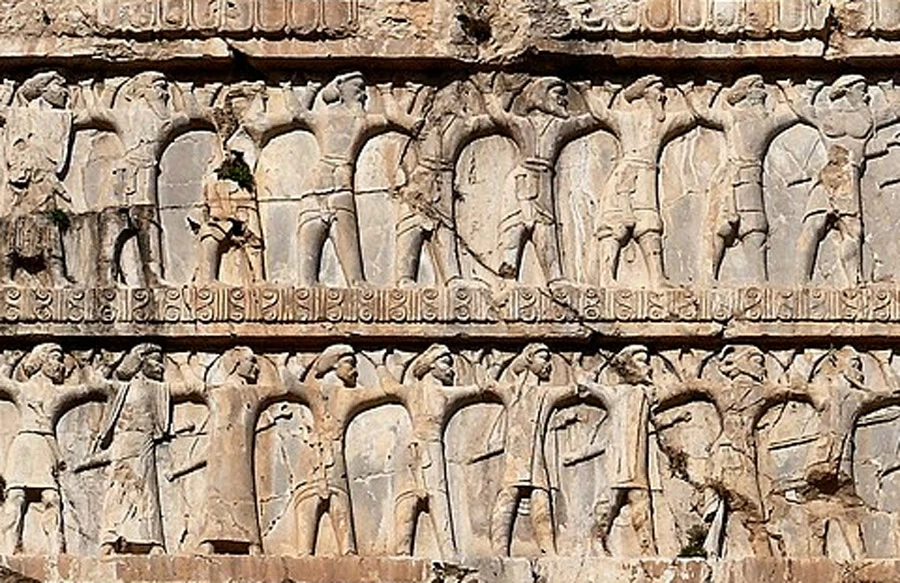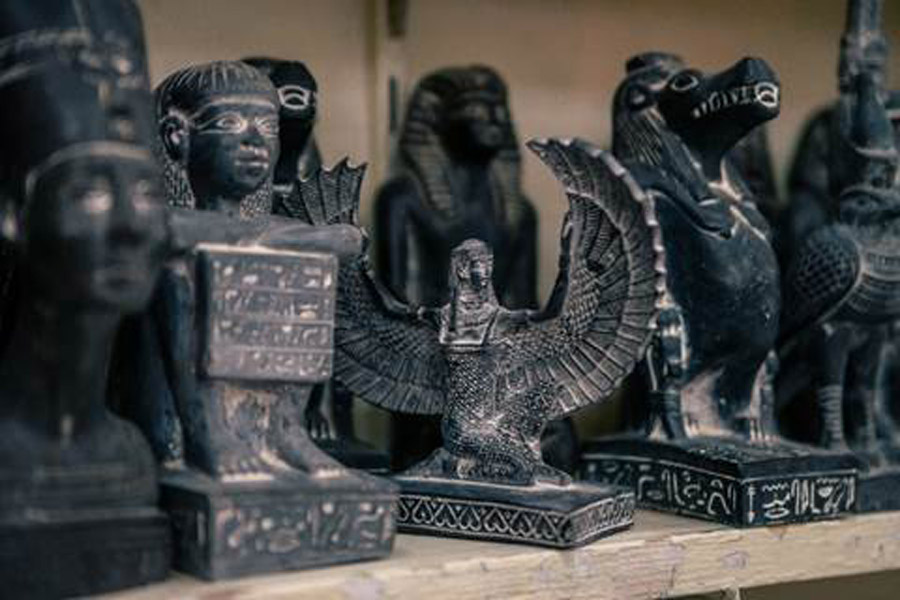In October 2000, Pakistani authorities came to know about a Karachi resident who was trying to sell a mummy for $11 million on the black market. The seller was brought in for questioning and told the police that he had acquired the mummy from an Iranian man.
The mummy was supposedly found after it had been exposed during an earthquake. The two of them had decided to sell the mummy and divide the proceeds among themselves.
A Persian Princess?
The mummy was brought to Karachi’s National Museum, where the remains were thoroughly inspected by the officials. According to the museum officials, the mummy was wrapped in an Egyptian style and placed in a wooden sarcophagus.
The wooden sarcophagus had inscriptions in ancient Persian, written in cuneiform text. Moreover, it also had carvings for a Zoroastrian deity named Ahura Mazda. The mummy had a mask and a golden crown, and its breastplate proclaimed, “I am the daughter of the great King Xerxes. Mazereka protects me. I am Rhodugune, I am.”
If this inscription could be believed, this meant that the mummified body belonged to a Persian princess, and was nearly 2,600 years old.
Investigations and Suspicions
On October 26, in a press conference, Ahmad Hasan Dani, a Pakistani archaeologist, made an announcement that the mummy was of a princess and dated back to 600 BC. According to Hasan Dani, the mummy was an Egyptian princess who was married to a Persian prince.

He had even speculated that the princess was most probably the daughter of Cyrus the Great, Achaemenid king. However, given the inscription this misidentification was quickly corrected.
The mummy was subjected to exhaustive testing, including chemical testing, CT scans, and carbon dating. The results of the examinations were unexpected and made the authorities suspicious about the authenticity of the mummy.
Close examination of the breastplate of the mummy revealed that the inscription on it was carved by someone who was not familiar with the Iranian script. The ancient Persian inscription included grammatical errors.
The reports of the CT scan brought further doubts. The adult woman inside was nearly 4 feet 7 inches (1.4 m) tall, and about 21 years when she died. The CT scan also revealed that the internal organs of the woman, such as lungs, heart, and brain, were removed before embalming, with the abdominal cavity filled with a powdery substance. However, this was completely different from Egyptian techniques.
Moreover, the autopsy report revealed that the woman had died due to a broken neck, believed to have been caused by blunt force trauma. This increased suspicions even more, even though the forensic pathologist could not ascertain whether the neck of the woman was broken deliberately or not.

The chemical analysis revealed that the hair and body of the woman had been bleached. Moreover, her abdomen was filled with various desiccating chemicals such as sodium chloride and bicarbonate of soda in their modern forms.
Finally, the carbon dating of tissues and bones revealed that the remains were of a woman who was believed to have died no earlier than 1996.
A Modern Murder?
The mummy was therefore exposed as a fraud. The investigators believed that the people involved had acquired a corpse, potentially from the grave robbers, from the region between Pakistan and Iran.
The forgers then must have removed the teeth and the internal organs of the woman and filled the body with drying chemicals, drying the body over several months. Whoever had prepared the mummy during this process had a sophisticated knowledge of anatomy, but had not expected the mummy to undergo this level of scrutiny.
But the grave robbing theory is only a supposition, and some authorities believed that this woman may have been murdered to make a fake mummy. In the police report published on April 17, 2001, it was stated that the woman was possibly killed with the use of a blunt instrument to the lower pelvic or back region, as her backbone and pelvis were damaged.
This evidence of violence to the spine also compelled the police to open a murder case. The investigation led to a number of suspects in the case were arrested by the police in the Baluchistan region of Pakistan, near the border with Afghanistan.
On August 5, 2005, the Edhi Foundation announced they would take custody of the woman’s body and made an announcement that the body was to be interred as per the proper burial rites. However, the government officials and the police initially did not respond to a number of requests. Finally, in 2008, the body was buried by the foundation following all the burial rites.
Remembered Today
Laid to rest but not forgotten, the story of a fake artifact and a modern murder lives on in the public consciousness. One example is an exhibition conducted by artist Hili Greenfeld in Jerusalem in August 2016, named “The Persian Princess.”
The exhibition was a tribute to the woman who in an instant lost her life and acquired the status of a princess. And who knows how many other fake mummies there are on the black market in Karachi, and how many other people have died and been sold to collectors.
Top Image: The Persian Princess? Source: odnolko / Adobe Stock.
By Bipin Dimri
